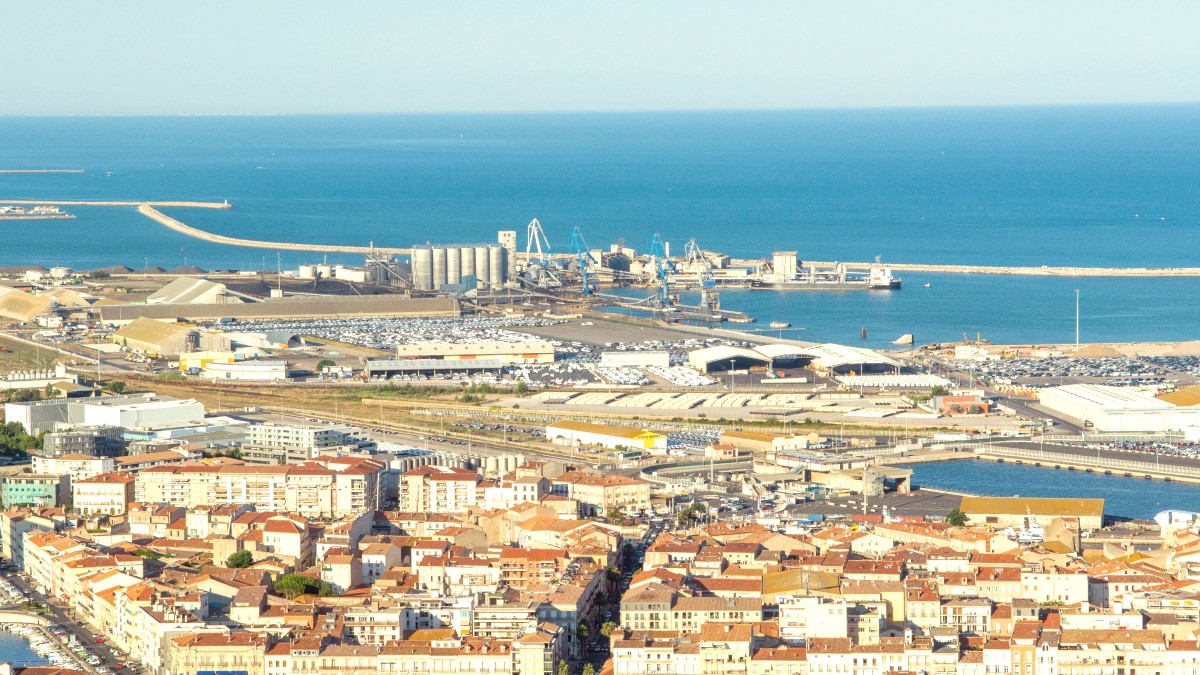
France
Sète's cuisine is deeply intertwined with its identity as a Mediterranean fishing port and its unique position between the sea and the Étang de Thau lagoon. It is a rich blend of traditional French, Mediterranean, and specific Languedoc-Roussillon influences, with a strong emphasis on fresh seafood. The city's history as a trade hub also presented various spices and flavors that shaped its unique dishes.
Fresh fish and shellfish (especially oysters and mussels from Étang de Thau), olive oil, garlic, tomatoes, local herbs (thyme, rosemary), saffron, and local wines are central to Sètoise cooking. These ingredients form the basis of many regional specialties.
Lunch is typically from 12:00 PM to 2:00 PM. Dinner is from 7:00 PM to 10:00 PM, though some restaurants open slightly earlier, around 6:30 PM. Many restaurants close between these hours.
Wait to be seated in restaurants. Bread is usually served with meals; do not ask for butter unless it is breakfast. Keep your hands on the table (not in your lap).
A typical French meal structure includes a starter (entrée), main course (plat), and dessert (dessert). Fixed-price menus ("menu du jour" or "formule") are common and present good value, especially at lunchtime.
A savory, round pie with a distinctive scalloped crust, typically filled with octopus or squid in a spicy tomato sauce.
Find it in local bakeries and dedicated "tielleries" throughout the city.
A rich, garlicky monkfish stew. Often creamy and white (unlike bouillabaisse), it is served with aioli (garlic mayonnaise) and croutons.
This dish showcases the freshness of local fish.
Stuffed girelle, a local fish often found in traditional restaurants. The stuffing varies but typically includes herbs and breadcrumbs.
A true taste of local seafood preparation.
Picpoul de Pinet (crisp, dry white, excellent with seafood), Muscat de Frontignan (sweet, fortified, often with dessert), and various rosé wines from Languedoc.
Anise-flavored apéritif, popular in Southern France, usually served with water and ice. It is a classic French drink.
Sète has a few upscale restaurants presenting refined seafood and French cuisine (e.g., La Coquerie). These establishments often feature creative menus and an elegant ambiance.
Abundant, especially along the canals and around the port, presenting a variety of fresh seafood, traditional Sètoise dishes, and general French fare.
Sète has various budget-friendly options, from market stalls to local bakeries, perfect for a quick and affordable meal.
The covered market is a culinary and cultural hub. Many vendors offer eat-in options at communal tables. Open daily (except Mondays) from early morning until early afternoon (e.g., 7:00 AM - 1:00 PM).
Outdoor markets also operate on specific days, selling fresh produce and local goods.
Limited compared to larger cities, but some Italian, Asian, and general European restaurants are available, mainly in the city center.
For a wider variety, Montpellier is a short train ride away.
Many restaurants along the canals offer outdoor seating.
Casual dining options can be found along the Corniche beaches.
Dining with views of the bustling port is a popular choice.
Traditional restaurants often have quaint, intimate indoor spaces.
French cuisine often uses wheat (in bread, sauces). Clearly communicate allergies to restaurant staff. Consider a Gluten-Free Restaurant Card if needed, translated into French.
Some modern establishments may have dedicated gluten-free options or separate preparation areas.
Research restaurants online beforehand. Apps like HappyCow can assist in locating vegetarian/vegan-friendly establishments.
When in doubt, self-catering from local markets gives the most control over ingredients.
While seafood is available year-round, specific catches vary by season. During the Saint Louis Festival in August, numerous food stalls present local specialties, creating a festive culinary atmosphere.
Many outdoor terraces in Sète are pet-friendly. Inquire before seating indoors.
Occasionally, local initiatives or private chefs may offer Sètoise cooking classes, providing hands-on experience with regional recipes.
Visit oyster farms ("mas conchylicoles") on the Étang de Thau (e.g., in Bouzigues, Mèze, or Marseillan) for direct tastings of incredibly fresh oysters and mussels, often paired with local wines.
Immerse yourself in the local culinary scene by exploring Les Halles de Sète and outdoor markets. Taste local produce and prepared foods.
This helps maintain traditional livelihoods and cultural heritage.
Many local producers are happy to share insights into their craft and the region's culinary traditions.
This interaction enriches your understanding of Sète's food culture.
Many restaurants display their menus outside, allowing you to browse options and prices before entering.
Lunch often presents better value with "menu du jour" options compared to evening meals.
Don't limit yourself to the port; explore backstreets and different neighborhoods for varied dining experiences.
A visit to Les Halles de Sète is more than just shopping; it's a social and culinary event.